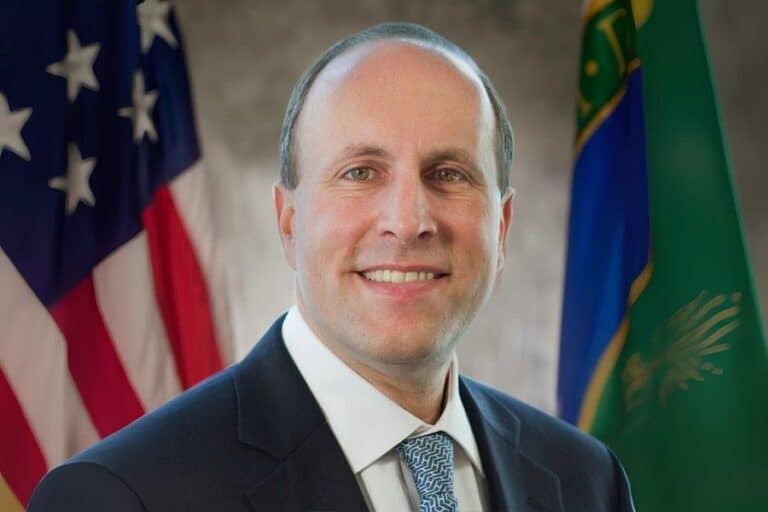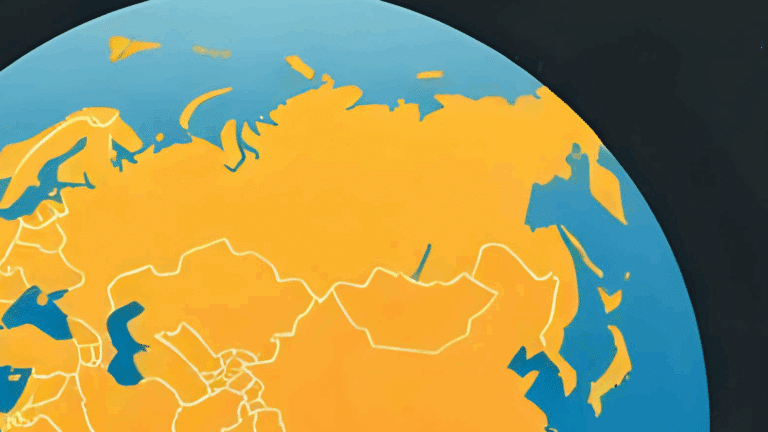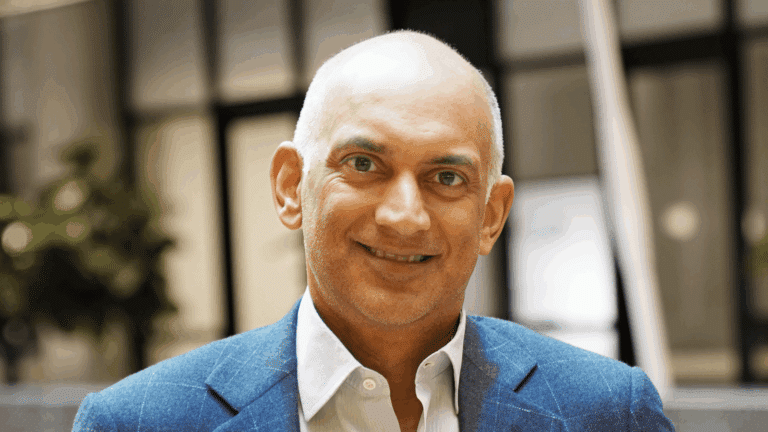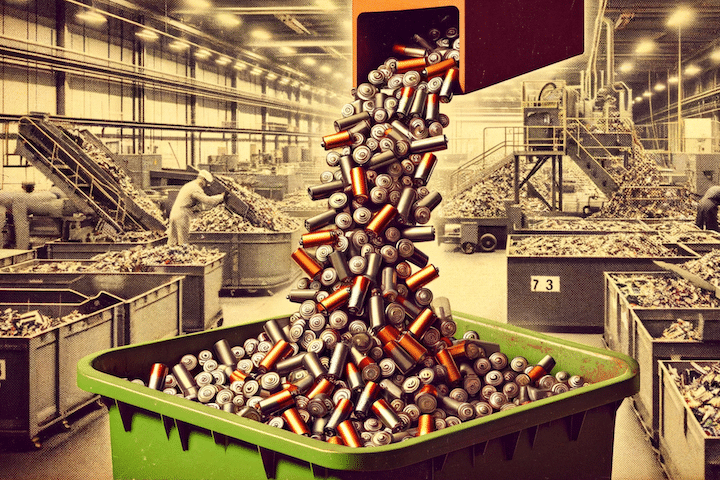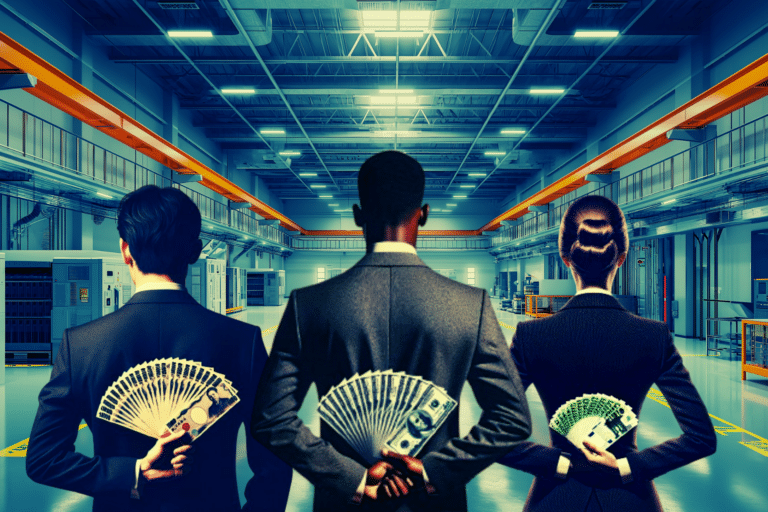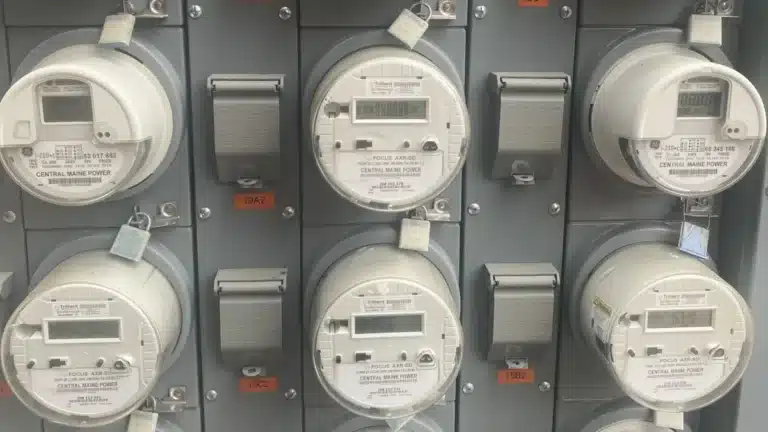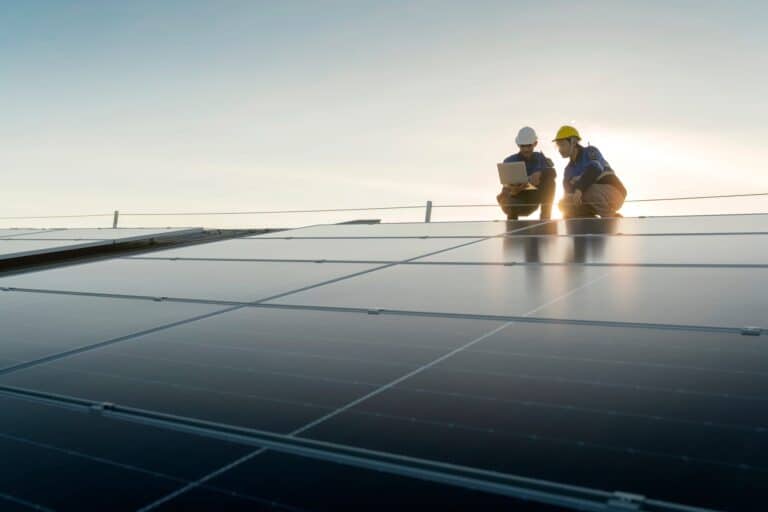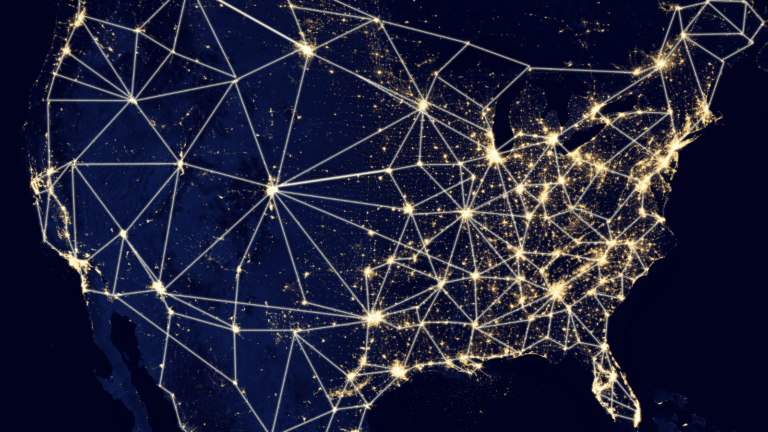Melissa Lott: [00:00:00] It’s officially summer here in North America. And that means one thing, it’s starting to get hot here in Austin, Texas. We have already set some new record temperatures. And I’m looking at the forecast and I’m seeing 102, 104, 103 degrees Fahrenheit. And as the mercury rises, I’ve been thinking about last year’s horrific heat wave in the Pacific Northwest, in western Canada. [00:00:21][21.5]
News anchor: [00:00:25] A prolonged, dangerous and historic heat wave engulfing western Canada has already caused dozens of deaths. People are being encouraged to go to cooling centers to combat the extreme heat. Lytton, Canada 121 degrees. That’s higher than it’s ever been in Europe or even South America in Canada, shattering the national record by five degrees and in Portland, shattering the all time record in the city by nine degrees. Not just a daily record, but an all time record. [00:00:53][28.2]
Melissa Lott: [00:00:54] The weeklong heat wave broke temperature records that were over a century old. And the headlines we’re talking about this mega heat wave. And here’s the thing. Heat waves are the deadliest weather event in the U.S. every year. They’re deadlier than hurricanes, than tornadoes, than floods. And this heat wave was no exception. [00:01:10][16.2]
News anchor: [00:01:13] The oppressive heat waves now gripping our nation are not only hotter but also deadly, even in the cool Pacific Northwest. Temperatures soared up to 116 degrees in Portland this summer. Hundreds lost their lives. [00:01:27][14.0]
Melissa Lott: [00:01:28] How did it go so tragically wrong? That’s what the province and some cities are being asked as the death toll from the heat wave continues to rise. [00:01:36][8.1]
News anchor: [00:01:37] Washington State reported more than 1300 emergency room visits for heat related illnesses. In Canada, the Vancouver Police Department reported nearly 100 sudden deaths since Friday, the vast majority likely related to the heat. [00:01:51][13.6]
Melissa Lott: [00:01:55] And while the exact toll of last year’s heat wave in the Pacific Northwest is hard to count, the New York Times reported that there were more than a thousand excess deaths across Washington, Oregon and British Columbia. And a big determining factor in who died in this heat wave, access to air conditioning. [00:02:11][15.3]
News anchor: [00:02:11] According to one report. Most died alone in homes with no working air conditioning or fans. Shane Brown says it was 108 degrees when he found his mother, Jolene, inside her low income housing unit. She used her Social Security to pay rent on an apartment that offered no AC. She’s one of Oregon’s 96 confirmed fatalities. [00:02:34][22.7]
Diana Hernandez: [00:02:42] The most extreme consequence of energy insecurity is death. [00:02:45][3.4]
Melissa Lott: [00:02:46] This is Dr. Diana Hernandez. She’s a professor at the Mailman School of Public Health at Columbia University, and she is a leading expert in this concept called energy insecurity. In other words, who gets access to things like air conditioning or heating and who goes without? [00:03:01][14.9]
Diana Hernandez: [00:03:02] When public health officials have gotten in to understand why folks have died, it’s oftentimes because there wasn’t an AC present. The AC was in the opposition. The utilities were shut off. [00:03:16][14.3]
Melissa Lott: [00:03:16] And as summers get hotter and hotter, energy insecurity can have life or death consequences. In the last few episodes, we’ve talked about what it’s going to take to decarbonize our buildings. And this week, we’re going to talk about how we can by climate change and energy and security at the same time. So this is the big switch, a show about how to rebuild the energy systems that are all around us. I’m Dr. Melissa Lott, and I’m the director of research at Columbia University’s Center on Global Energy Policy. You might not have heard the term energy insecurity before, but you might have experienced it or you might know someone who has. According to the U.S. Energy Information Administration, about a third of American households are energy insecure. This means that they struggle to pay their energy bills or they couldn’t keep their house at a safe temperature because of energy costs. Energy insecurity disproportionately impacts low income black and Latino households. Over half of black households in the U.S. and just under one half of Latino households experienced energy insecurity in 2020. You’ve written a lot about these concepts of energy insecurity and injustice. For someone who’s never heard these terms before, can you help us explain what they are? What do they mean? [00:04:34][78.0]
Diana Hernandez: [00:04:35] So energy insecurity and energy justice are basically a problem and an approach to addressing a problem. So energy insecurity is about the ways in which, you know, people have economic challenges and paying for their utilities. They have physical challenges based on the kind of conditions of their home, the efficiency of like the kind of building performance and then the age and performance of appliances, for instance. And those physical conditions kind of sometimes drive up and often do drive up economic cost. And then there’s a coping component. So, you know, it’s fair to say that when people are challenged physically or economically, that they they do things and they cope in very specific and particular ways that make sense for them. And sometimes that’s a question of forbearance and forgoing. So forgoing basic necessities like food and medicine in order to pay their utility bills or keeping homes and kind of unhealthy and uncomfortable temperatures, either too hot or too cold or doing other kind of things like leaving their homes in order to kind of reduce the expenses. But ultimately, it’s together that you have the kind of economic, physical and coping components coming together under the rubric of energy insecurity. [00:06:20][104.4]
Melissa Lott: [00:06:21] This idea of energy insecurity, it’s really important because we’re up against a pretty huge problem and that problem threatens lives. We said earlier that official estimates put one third of U.S. households as being energy insecure already. That’s a massive chunk of the population. But Dr. Hernandez thinks that it could be even more than that. So when we talk about energy insecurity in the US today, how big of a problem is this and what are these root causes that are driving it? [00:06:51][29.3]
Diana Hernandez: [00:06:52] So I’ll I’ll answer that question simply by saying that kind of our best available estimates, especially in a non pandemic context, is that at least one third of all households are energy insecure. And I actually like, based on my read and a more theoretically based understanding of energy insecurity, which is kind of based on the fact that, you know, like there are people that have the economic challenges or have issues in their homes and they might not necessarily present with some of the same financial burdens, and then that some people are coping in these kind of adverse ways that I described is actually closer to about half of the population. Disproportionately low income households will experience these issues, but it’s not exclusive to those households. So I think ultimately, you know, this is, again, an issue of recognition and raising awareness about just how common this is and then helping people to see themselves as kind of fitting in the group. And it’s a group that, you know, I think the whole point is to not stigmatize it because many of us, you know, experience parts of this phenomenon. You know, you could be a very wealthy homeowner and still have single pane windows and that could be a real pain in the butt. You know, and the whole point is that, you know, there are ways for us to be able to relate on a real human level. [00:08:34][101.5]
Melissa Lott: [00:08:35] Okay. So energy insecurity is this big life or death problem that affects a lot of Americans and it disproportionately affects the lowest income Americans and communities of color. But what can we do about it? That’s for energy. Justice comes in. [00:08:48][13.6]
Diana Hernandez: [00:08:50] Energy. Justice is an approach to addressing a number of energy concerns. There are kind of four central pillars to energy justice. There’s procedural justice, distributional justice, recognition, justice and restorative justice. [00:09:09][18.6]
Melissa Lott: [00:09:10] Four pillars. Dr. Hernandez is going to walk us through each one of them. And first step, recognition justice. In other words, just acknowledging that we have a problem. [00:09:19][8.8]
Diana Hernandez: [00:09:20] And in some ways, energy and security is best reflected in the pillar around recognition justice. It recognizes that people have a problem and meeting their utility needs at home. [00:09:32][12.4]
Melissa Lott: [00:09:33] After all, you can’t really fix a problem until you acknowledge that it exists. After recognition justice. That’s what Dr. Hernandez calls procedural justice. [00:09:42][8.4]
Diana Hernandez: [00:09:43] Procedural being literally about representation in the procedures. You know, the regulatory process, how rates are determined, like how energy is you provided, and who gets to not only benefit from that, but also to kind of oversee it. [00:10:04][21.1]
Melissa Lott: [00:10:04] In other words, who makes the rules and how the rules are set? And as a result, who benefits and who gets the short end of the stick? Which brings us to distributional justice. [00:10:14][9.9]
Diana Hernandez: [00:10:15] Then there’s the other piece around around distribution. So the kind of fair distribution of benefits and burdens. And we know just historically that communities of color, especially in the US and low income communities have more distributional burden than one example is like the siting of power plants. They tend to be in lower income neighborhoods, in neighborhoods that are comprised primarily of people of color. And and oftentimes kind of an exploitation of these communities. [00:10:48][33.0]
Melissa Lott: [00:10:50] Which brings us to the last of the four pillars, restorative justice. [00:10:54][3.7]
Diana Hernandez: [00:10:55] And then on the more hopeful side, there’s the kind of idea around restorative justice, like the idea that there are some things that can happen with respect to energy that can make that can help communities heal, that can make them whole, that can really, you know, identify the real possibilities of energy as kind of a work force and kind of anti-poverty and provide wealth opportunity as well as opportunities for health and general well-being. [00:11:25][30.2]
Melissa Lott: [00:11:30] Energy justice is essential to helping us figure out how to tackle energy and security while also decarbonizing buildings. What are the biggest equity questions that we need to keep in mind as we think about decarbonizing buildings, in particular the ones that we live in our homes, so houses, apartments, trailers, etc.. [00:11:47][16.9]
Diana Hernandez: [00:11:50] So to me that’s like such a central question, right? Because the opportunity to decarbonize and to focus on the residential housing sector is without question one of the most important intervention opportunities that we have before us. But what happens when people can’t afford the kind of retrofits that are necessary to improve performance? What happens when people are at risk of being displaced as a result of the capital improvements that are being done by someone else? And those are. So when you ask me what should be done, I think part of it is about unlocking financial resources to make it so that homes that people that live in buildings and in homes that can’t otherwise comfortably afford those retrofits have access to the financial capital and also to the reliable workforce and the trustworthy kind of like companies or agencies that are able to do the work. So this is especially true for renters, like when a building has undergone significant capital improvements, there should be the corresponding protections that allow for people to stay without there being a huge financial burden that’s associated with it. And I guess that still connects especially to the question of affordability and access to capital, especially for buildings where where lower income people live. [00:13:34][104.1]
Melissa Lott: [00:13:34] So when we think about decarbonizing buildings and we think about both energy and security, but also energy justice and we think about those at the same time, are there any major policies or decisions that have been made or that could be made that can help us to do both of these things that are considered both in security and justice at the same time? [00:13:54][19.9]
Diana Hernandez: [00:13:56] So, I mean, I guess the most ambitious example of this is probably in Justice 40. There’s a mandate that 40% of investments in the clean energy economy be directed to disadvantaged communities. And so kind of being very intentional about ensuring that these populations and communities are prioritized is a step in the right direction. That opens up the possibility that communities and populations that like are defined as disadvantaged get access to clean energy. It does not ensure affordability, and so it doesn’t fully address the concerns around economic challenges. And so that to me is really the way to address that is about a more comprehensive policy approach that, you know, surely upgrading homes and buildings and ensuring that people have access to renewable energy, solar, rooftop solar, etc. is certainly a part of the mix, but it also has to be connected to what’s happening in terms of the regulatory process at the state level, like how are rates determined? Are there opportunities for people to pay what they can afford from an energy perspective? There’s a policy called the Percent Income Payment Plan, and that’s about like ensuring that energy burden is capped at 6%, meaning that what people pay toward energy is at or below 6% of their household income. And it’s actually approaches more comprehensive approaches that kind of join together these kind of multiple layers of investment and protection that are really, you know, that get us to the point where we can really see energy and security and energy justice kind of happening at once. [00:16:22][146.1]
Melissa Lott: [00:16:25] So first we have to ensure that disadvantaged and energy insecure communities have access to renewable energy by specifically investing in those communities. Like with the Justice 40 program that Dr. Hernandez mentioned. And then we have to make that energy affordable. There are some programs like this out there that already exist, like the Low Income Home Energy Assistance Program or Lightship, which gives cash grants to low income households to help them pay their energy bills. Like we’ve got this $5.4 billion boost during the pandemic from the CARES Act to help families pay their utility bills. And there’s also the weatherization assistance program, which helps low income households increase the energy efficiency of their homes. But a big problem for energy assistance programs is that they’re under enrolled, like Dr. Hernandez says. [00:17:12][46.8]
Diana Hernandez: [00:17:13] I think one of the biggest problems in the energy assistance space is under enrollment. That’s true for like bill assistance through like it’s especially true when it comes to the weatherization assistance program. WHAP, which is not the Cardi B version. [00:17:32][18.6]
Melissa Lott: [00:17:36] I love that you’re just happy. I’m not the only one thinking it. [00:17:41][4.9]
Diana Hernandez: [00:17:43] I wish I wish weatherization was as sexy as that, but it just, you know, it is idea. Maybe that’s why it’s under enrolled. [00:17:49][6.4]
Melissa Lott: [00:17:50] So maybe these programs get a boost if Cardi B would write them an anthem. But Dr. Hernandez says that there are some more basic reasons why people can’t get access to. [00:17:59][8.5]
Diana Hernandez: [00:17:59] Them under enrollment in these programs also has to do with kind of a bureaucratic, bureaucratic and administrative burdens, right? Like the fact that there’s so much paperwork attached to applying that if you’re a renter and you want to weatherize your home, you have to usually get your landlord to be on board. There are many reasons why they wouldn’t want government intervention. So it’s a complicated mix of of of issues that make it so that people aren’t necessarily accessing programs that they should otherwise that that they are otherwise entitled to. [00:18:34][35.3]
Melissa Lott: [00:18:36] So if you had a magic wand and you think about all these challenges and all the opportunities are out there as we move to net zero around equity and in security justice, all of these things, what would be the top three things you do to help us actually accelerate progress in a way that factors all of these things in. [00:18:54][18.8]
Diana Hernandez: [00:18:55] So if I had a magic wand and I could choose kind of three things to do, I think the first thing is definitely to find ways to kind of provide opportunities for buildings and homes to be kind of better performing from an energy efficiency perspective, I think. I mean, if you had to like if I had to kind of really tell you what I think is at the root of this, of course, it’s, you know, it’s poverty. And I’ll get to that, you know, with my other wish. But but I think one of the first things is really just improving the built environment and improving where people live. I think the other thing is to give more income support. So, you know, one of the things that we have found in our research is that when people have access to more food related aid, more sources of income support, they are much more likely to be energy secure and vice versa. When people have access to energy assistance, they’re also more likely to be food secure and housing secure and all those things. And so we want secure households. There’s an overall emphasis on resilience and resilient households. But when you have a secure household to begin with, they can be resilient. [00:20:14][78.6]
Melissa Lott: [00:20:17] And increasing energy security along with decarbonizing the economy. That’s what’s going to help us prevent people from dying of future heat waves. And hopefully with the right policies in place, we can do both at the same time, because as the climate heats up, there will be more deadly heat waves. And the truth is that a lot of the deaths in heat waves are preventable. It’s a matter of making sure that everyone has access to enough affordable, clean energy to switch that AC on. And that’s our show. Next up on the Big Switch, we’re talking about Wal-Mart, sports stadiums, hospitals and office high rises, commercial buildings. The Big Switch is produced by Columbia University’s Center on Global Energy Policy, in partnership with Post-Script Media. This episode was produced by Daniel Waldorf and Alexandria. Her story editing by Ed Bailey, Mixing and Scoring by Sean Markland and Greg Bill Frank. Theme Song by Sean Marquand. A special thanks to our Columbia team Curson, Smith, Cully, Liz Smith and Natalie Volk. Our managing producer is Cecily Meza Martinez and our executive editor, Steven Lacy. I’m Don. Melissa BLOCK. And this is the big switch. [00:20:17][0.0]
[1149.8]
